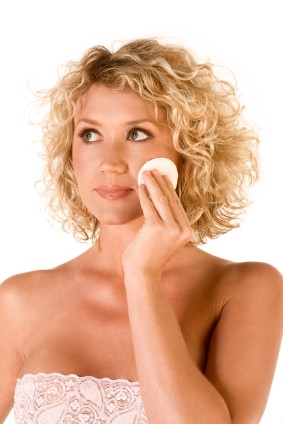Laser resurfacing is an effective technique for improving sun damaged skin, aging skin, flattening protruding acne scars, and eliminating wrinkles. Laser beams selectively vaporize scars and wrinkles. In this method, since the laser is more precise about controlling the depth of penetration, it makes it a very safe treatment.
 There are two types of lasers the doctor may choose to utilize. First, is the carbon dioxide laser, which dispenses short bursts of extremely high energy. It takes away skin layers, one at a time, unfolding fresh new skin underneath. It produces a decreased risk of complications and scarring.
There are two types of lasers the doctor may choose to utilize. First, is the carbon dioxide laser, which dispenses short bursts of extremely high energy. It takes away skin layers, one at a time, unfolding fresh new skin underneath. It produces a decreased risk of complications and scarring.
The second type of laser to be considered is the Erbium Yag laser, which delivers a wavelength that softly penetrates the skin and is hugely absorbed by water. It clears away layers of skin with high quality precision.
The Erbium Yag laser is usually chosen for patients who possess low to moderate discolorations, surface scars, and facial wrinkles. The softness of this laser is chosen for areas where the skin is more sensitive, especially around the hands, neck, mouth and eyes.
This laser is also the best choice for individuals who cannot tolerate prolonged redness after the procedure and those with darker skin types. The carbon dioxide laser, on the other hand, is a more effective method for helping patients with severe sun damage and deeper facial wrinkles.
Lasers are also very effective for acne resurfacing. Most damage from the environment occurs on the outer layer of the skin. By using a laser acne resurfacing treatment, individuals can eliminate that outer damage with the carbon dioxide laser.
This laser works to eliminate damaged cells and stimulate the growth of new collagen that can lift and support the skin’s surface. Collagen stimulation, along with generation of new skin cells will improve the look of acne scars. Some patients may need anywhere from one to three treatments for acne resurfacing, depending on the depth of the scars.
Cost
Generally, the total cost of laser skin and acne resurfacing is made up of: the surgeon’s fee, possible camouflage makeup some practices use after acne resurfacing, post-surgery medication, ointments, pre- and post-operative care, anesthesia, and the facility cost. The national average cost of the cosmetic surgeon’s fee is around $2,317.
The cost will vary depending upon the area of treatment and location. Acne resurfacing can be quite expensive and are not generally covered by medical insurance. On rare occasions, the procedure can be declared a medical necessity if the method is used in the treatment of pre-cancerous skin growths or the modification of scars.
Recovery
After acne resurfacing, the skin will appear to be a pinkish to reddish color. New skin will emerge within 2-3 days. Makeup is permitted by day 4. There will be a marked improvement in wrinkles and skin texture within three months.
